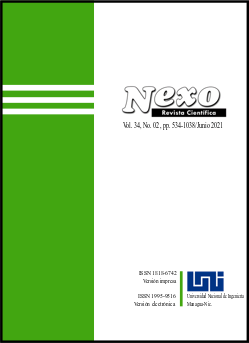Basics of systems approach to methodology of assessing waterworks facili-ties on natural environment
DOI:
https://doi.org/10.5377/nexo.v34i02.11600Keywords:
waterworks facility, system, methodology, river CubanAbstract
According to the regulatory and environmental requirements on operating waterworks facilities referred to as objects of activity, the environmental influence of these facilities must be assessed in terms of water resource utilization, which is exactly the goal of this study. The basics of the methodology of this assessment are developed by the system approach centred around the notion of System. The results of studying the interaction of the object of activity (OA) with the natural environments (NENV) of the basin geosystem are used in developing the basics of the methodology of environmental influence assessment (EIA). The study results have been used in designing and building hydropower engineering facilities in the North Caucasus in the South of Russia.
Downloads
Downloads
Published
How to Cite
Issue
Section
License
The authors who publish in Nexo Scientific Journal agree to the following terms:
- Authors retain the copyright and grant the journal the right of the first publication under the license Creative Commons Attribution License https://creativecommons.org/licenses/by/3.0/, which allows others to share the work with a recognition of the authorship of the work and the initial publication in Nexo Scientific Journal.
- Authors may separately establish additional agreements for the non-exclusive distribution of the version of the work published in the journal (for example, in an institutional repository or a book), with the recognition of the initial publication in Nexo Scientific Journal.
- Authors are allowed and encouraged to disseminate their works electronically (for example, in institutional repositories or in their own website) before and during the submission process, as it can lead to productive exchanges, as well as earlier and greater citation of published works.











